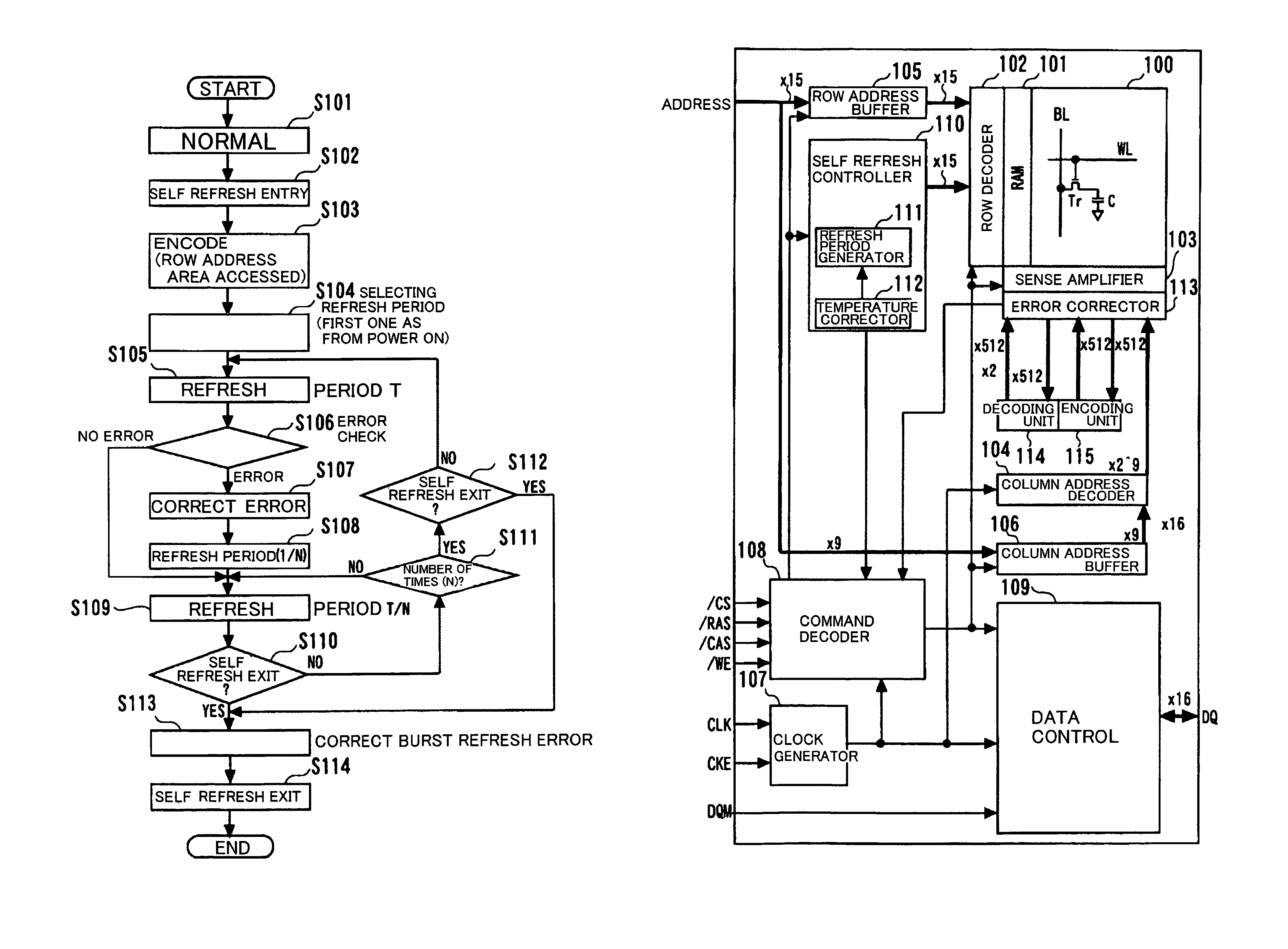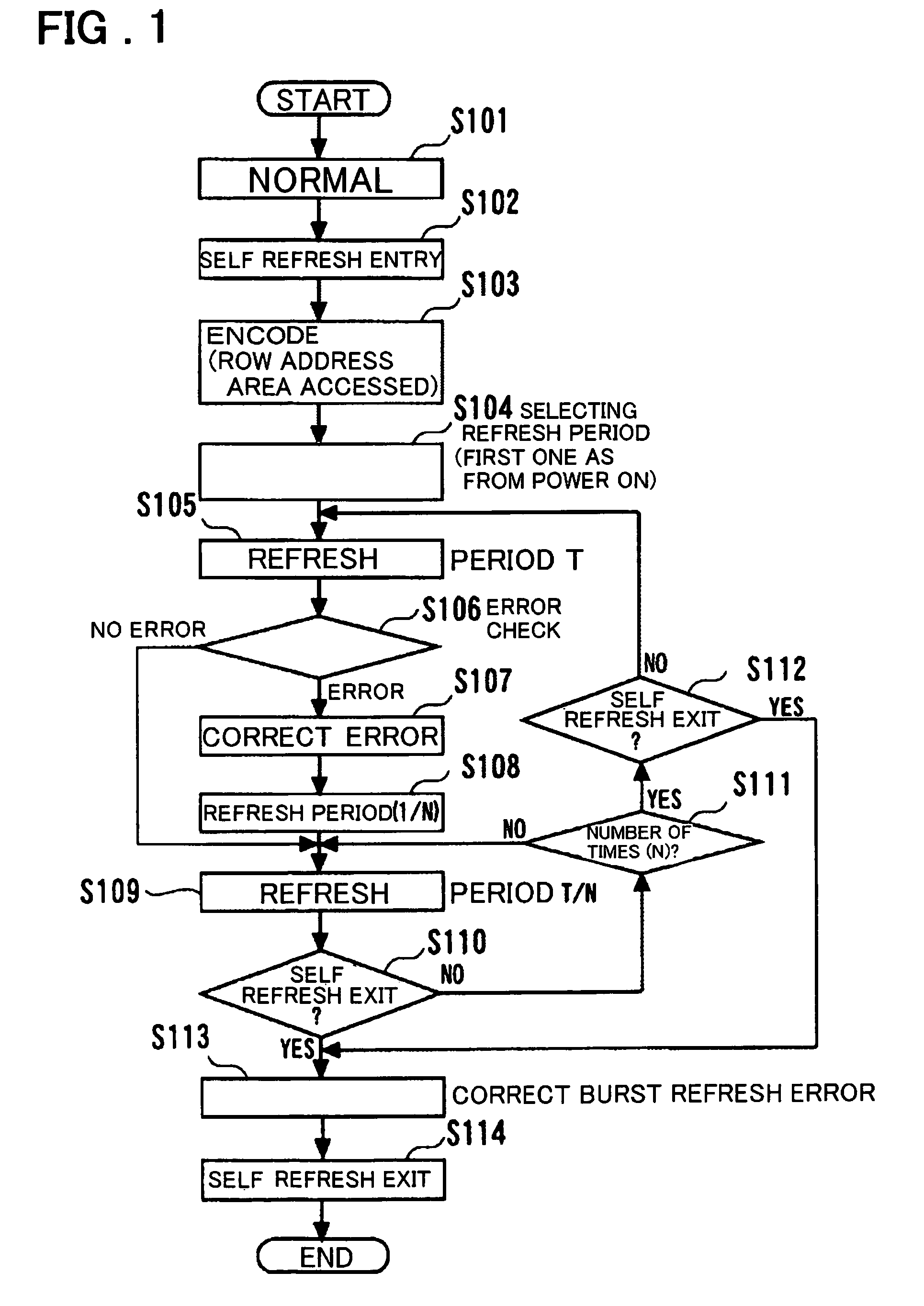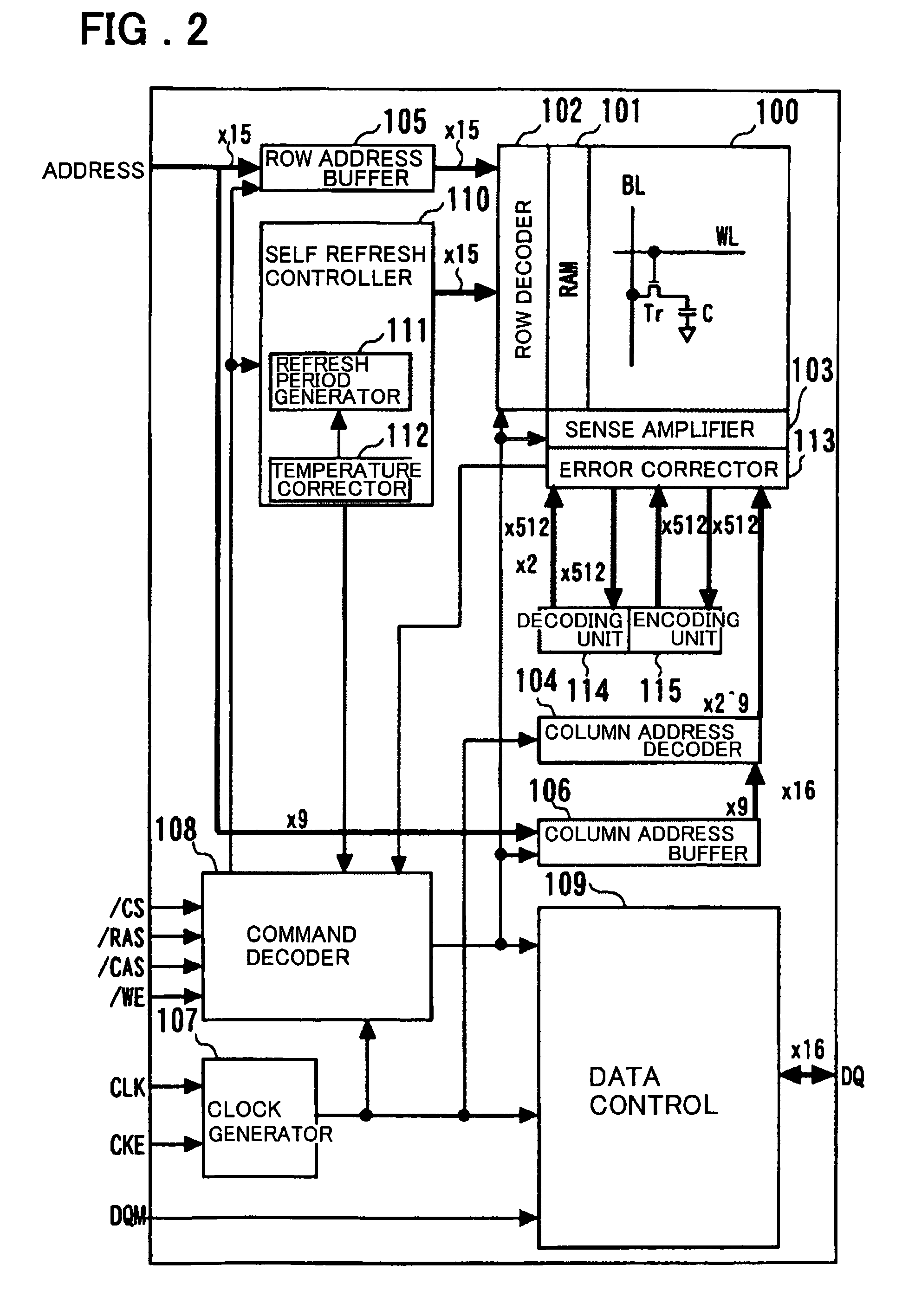Semiconductor storage device and refresh control method therefor
a technology of semiconductors and storage devices, applied in the field of semiconductor storage devices, can solve the problems of reducing the retention time to as low as 200 ms, affecting the efficiency of reducing standby current, so as to achieve the effect of preventing the increase of chip area, and facilitating the improvement of standby current efficiency
- Summary
- Abstract
- Description
- Claims
- Application Information
AI Technical Summary
Benefits of technology
Problems solved by technology
Method used
Image
Examples
first embodiment
[0043]FIG. 1 is a flowchart for illustrating the operation of a semiconductor storage device according to the present invention.
[0044]FIG. 2 is a diagram showing the configuration of the semiconductor storage device according to the first embodiment of the present invention.
[0045]FIG. 3 illustrates the recording of a row address in a RAM according to the first embodiment of the present invention.
[0046]FIG. 4 illustrates the encoding in the first embodiment of the present invention.
[0047]FIG. 5 illustrates readout of the refresh information in the first embodiment of the present invention.
[0048]FIG. 6 illustrates error detection and error correction in the first embodiment of the present invention.
[0049]FIG. 7 is a diagram showing the configuration of a one bit error detector in the first embodiment of the present invention.
[0050]FIG. 8 is a flowchart for illustrating the selecting of a refresh period in the first embodiment of the present invention.
[0051]FIGS. 9A,9B and 9C illustrat...
second embodiment
[0055]FIG. 13 is a flowchart for illustrating the processing of a four-value adaptive refresh period according to the present invention.
[0056]FIG. 14 is a flowchart for illustrating the selecting processing of the four-value adaptive refresh period according to a second embodiment of the present invention.
[0057]FIG. 15 illustrates the selecting processing of the four-value adaptive refresh period according to a second embodiment of the present invention.
[0058]FIG. 16 illustrates the relationship between the current consumption and the transition of the inner state in the second embodiment of the present invention (first one after power up).
[0059]FIG. 17 illustrates the relationship between the current consumption and the transition of the inner state in the second embodiment of the present invention (second one after power up).
[0060]FIG. 18 illustrates the four-value adaptive refresh of the second embodiment of the present invention and a Comparative Example.
third embodiment
[0061]FIG. 19 shows the overall configuration of the present invention.
[0062]FIG. 20 is a flowchart for illustrating the operation of an embodiment of the present invention.
[0063]FIGS. 21A and 21B illustrate the relationship between the current consumption and the transition of the inner state in the second embodiment of the present invention (second and following ones one after power up).
[0064]FIG. 22 is a flowchart for illustrating an example of the conventional refresh control.
[0065]FIG. 23 is a flowchart for illustrating another example of the conventional refresh control.
PUM
 Login to View More
Login to View More Abstract
Description
Claims
Application Information
 Login to View More
Login to View More - R&D
- Intellectual Property
- Life Sciences
- Materials
- Tech Scout
- Unparalleled Data Quality
- Higher Quality Content
- 60% Fewer Hallucinations
Browse by: Latest US Patents, China's latest patents, Technical Efficacy Thesaurus, Application Domain, Technology Topic, Popular Technical Reports.
© 2025 PatSnap. All rights reserved.Legal|Privacy policy|Modern Slavery Act Transparency Statement|Sitemap|About US| Contact US: help@patsnap.com



